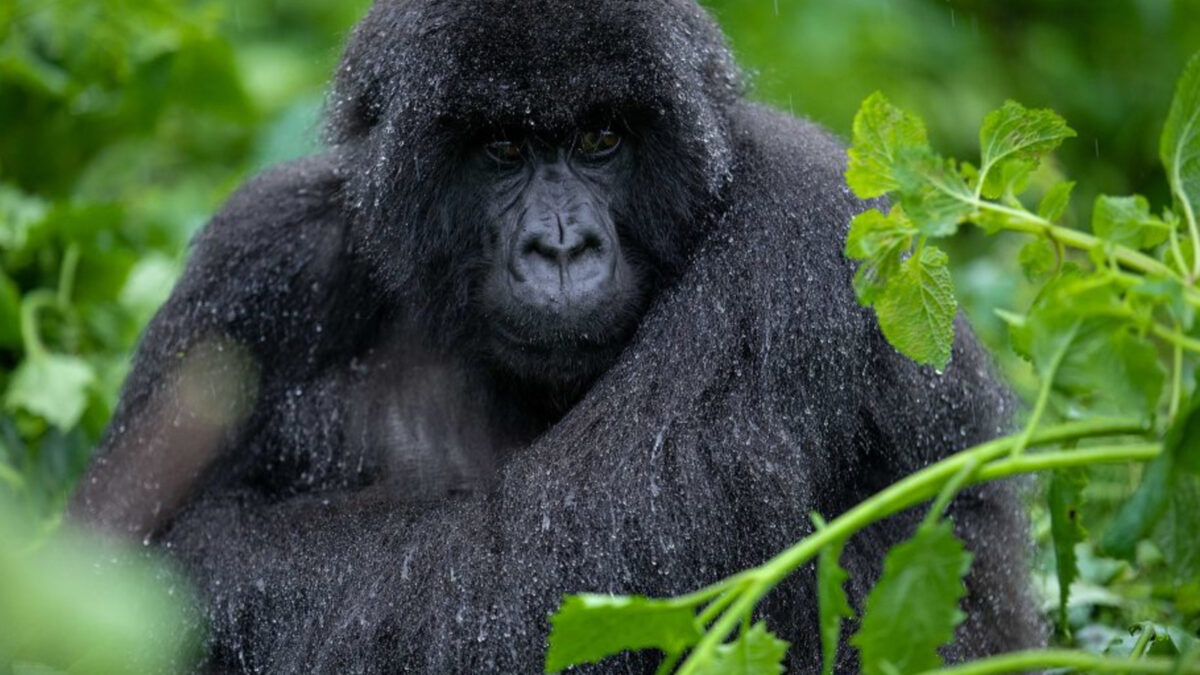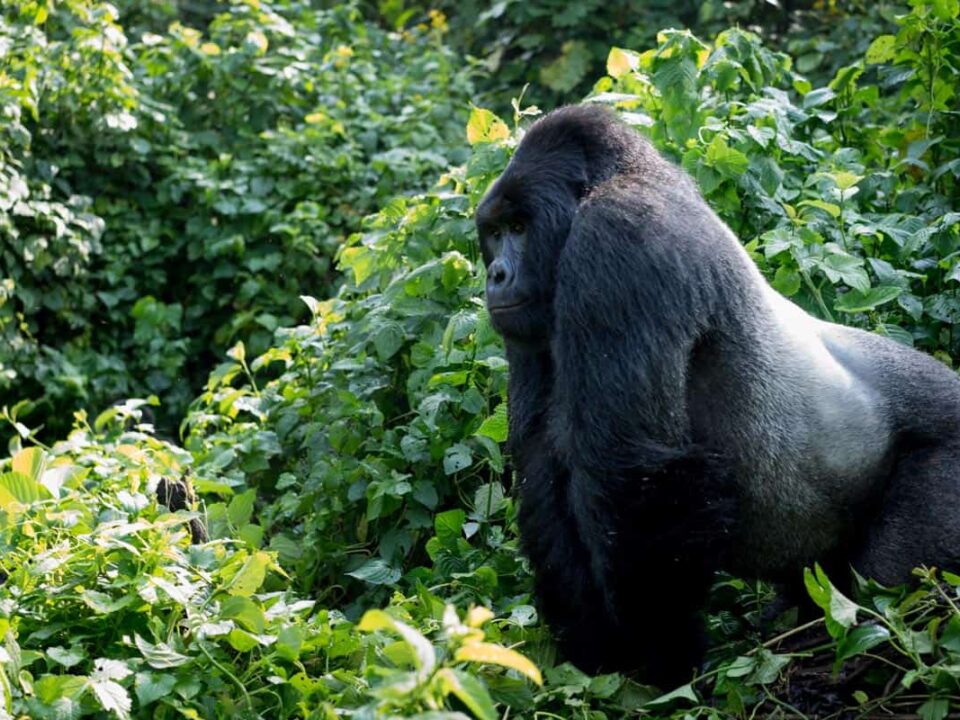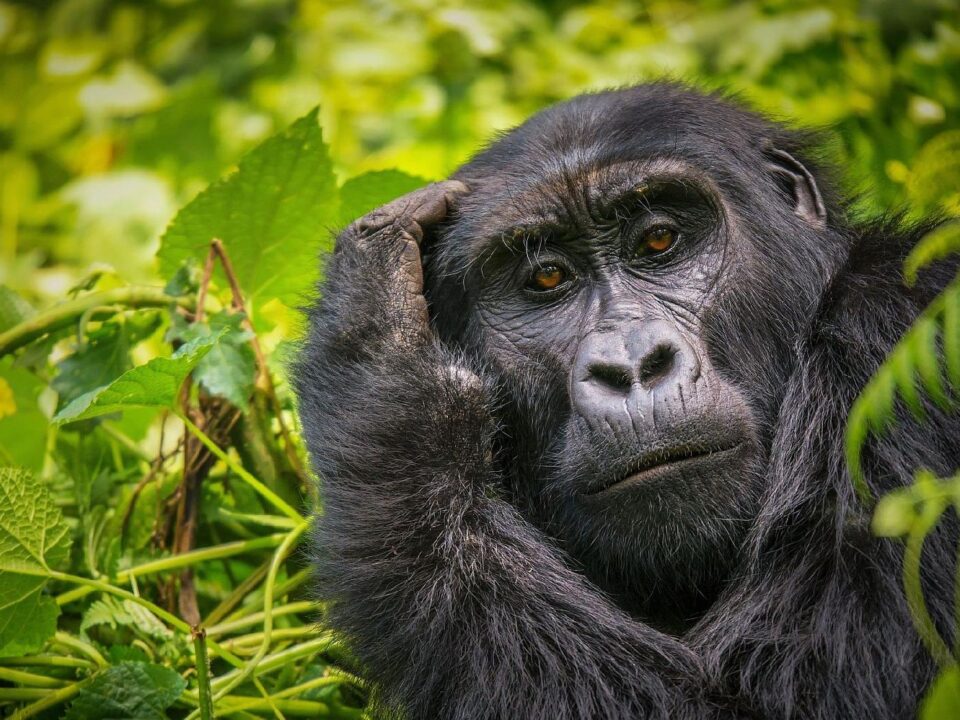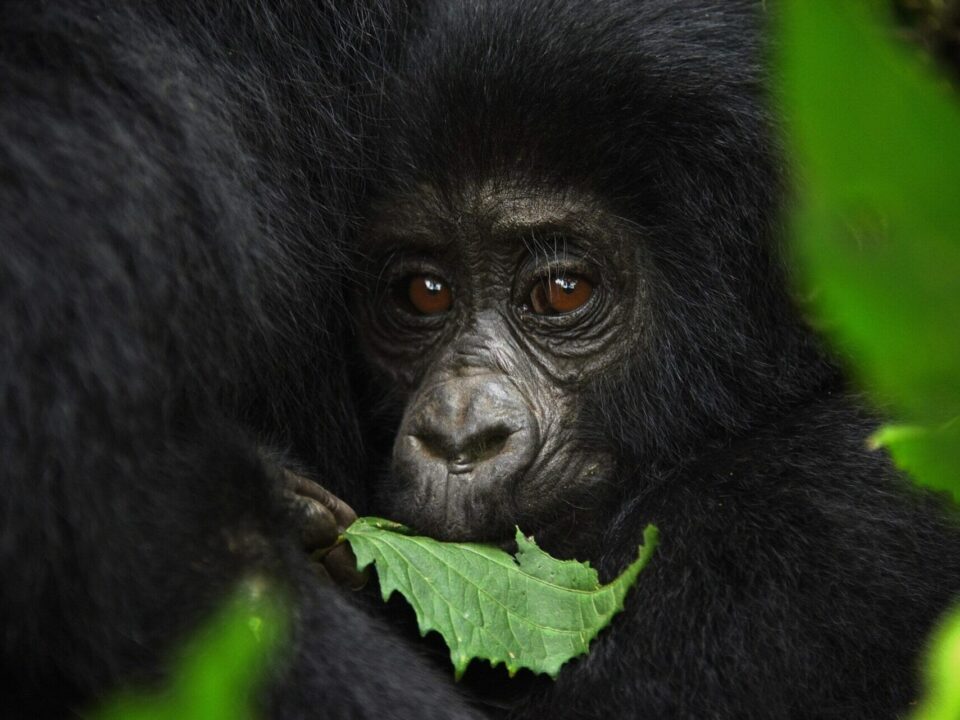Where do Mountain Gorillas Live?
Why use a Porter for Gorilla Tracking?
January 4, 2024
How to Habituate Mountain Gorillas?
January 4, 2024Where do Mountain Gorillas Live? – Exploring the Natural Habitat of Mountain Gorillas
Where do Mountain Gorillas Live? — The Mountain Gorilla, a critically endangered primate species, sparks curiosity about their habitat, climate preferences, and their ability to survive in captivity. Unlike their counterparts in zoos, which are Western Lowland Gorillas, Mountain Gorillas are exclusively found in the wild and cannot endure captivity.
These remarkable creatures inhabit high forested mountains at elevations ranging from 8,000 to 13,000 feet. Adapted to the challenging environment, Mountain Gorillas boast thicker and more abundant fur compared to other great apes. The fur serves as insulation, enabling them to survive in temperatures that frequently drop below freezing. However, human encroachment into their territories has forced Mountain Gorillas higher into the mountains for extended periods, subjecting them to perilous and sometimes lethal conditions.
Despite these challenges, recent years have seen a positive shift in the outlook for Mountain Gorillas, thanks to dedicated conservation efforts. Even in the face of civil conflicts, poaching, and an expanding human population, both populations of Mountain Gorillas have witnessed an increase in numbers.
Geographical Distribution of Mountain Gorillas
The world’s last remaining Mountain Gorillas are found in three East African countries, spanning four National Parks. These parks include Bwindi Impenetrable Forest National Park and Mgahinga Gorilla National Park in Uganda, Volcanoes National Park in Rwanda, and Virunga National Park in the Democratic Republic of Congo. These designated areas represent the sole locations where Mountain Gorillas can be observed in their natural habitat.
Mountain Gorillas in Uganda
In Uganda, the prime locations to witness Mountain Gorillas are Bwindi Impenetrable Forest and Mgahinga Gorilla National Parks. Uganda boasts the largest population of Mountain Gorillas globally, making it a revered destination for Gorilla trekking trips and conservation initiatives.
To embark on a journey to the habitats of Mountain Gorillas in Uganda, one must visit the respective national parks. Gorilla tracking requires a permit, obtainable from the Uganda Wildlife Authority or a reputable safari company like Trek Africa Expeditions.
Mountain Gorillas in Rwanda
Rwanda provides another compelling setting to encounter Mountain Gorillas, situated in Volcanoes National Park (Parc National des Volcans). Positioned in the north-western part of the country, the park shares borders with Uganda’s Mgahinga Gorilla National Park and the Democratic Republic of Congo’s Virunga National Park.
Volcanoes National Park holds historical significance as the site where Dian Fossey conducted groundbreaking Gorilla research, contributing to Gorilla and primate conservation. Gorilla permits for Rwanda are obtainable through the Rwanda Development Board, the governmental body responsible for issuing these permits.
Mountain Gorillas in the Democratic Republic of Congo
In the Democratic Republic of Congo, Virunga National Park offers an opportunity to witness Gorillas in their natural habitat. This park shares borders with Rwanda’s Volcanoes National Park and Uganda’s Mgahinga Gorilla National Park. Collaborative efforts with Uganda and Rwanda, along with conservation partners, have facilitated the study and preservation of the habitat for Mountain Gorillas in the Democratic Republic of Congo.
While Gorilla trekking adventures are organized in both Uganda and Rwanda, ventures into the Democratic Republic of Congo are currently not pursued due to security and safety concerns for guests and organizers. Visiting any of these locations enables a firsthand experience of Mountain Gorillas in their natural habitat.
Despite being an endangered species, conservation efforts have yielded significant success, leading to a notable increase in their population. Current statistics indicate that 1080 Mountain Gorillas thrive in the wild, marking a substantial growth from the 2003 census estimate of 380 individuals. While progress is evident, ongoing threats to their livelihood persist.
Local communities play a crucial role in Gorilla conservation, benefiting substantially from Gorilla tourism. The direct financial support from such tourism activities aids neighboring communities and contributes to broader conservation and environmental protection efforts. Supporting Gorilla tourism becomes a meaningful way to contribute to the preservation of Mountain Gorillas and their habitat.




